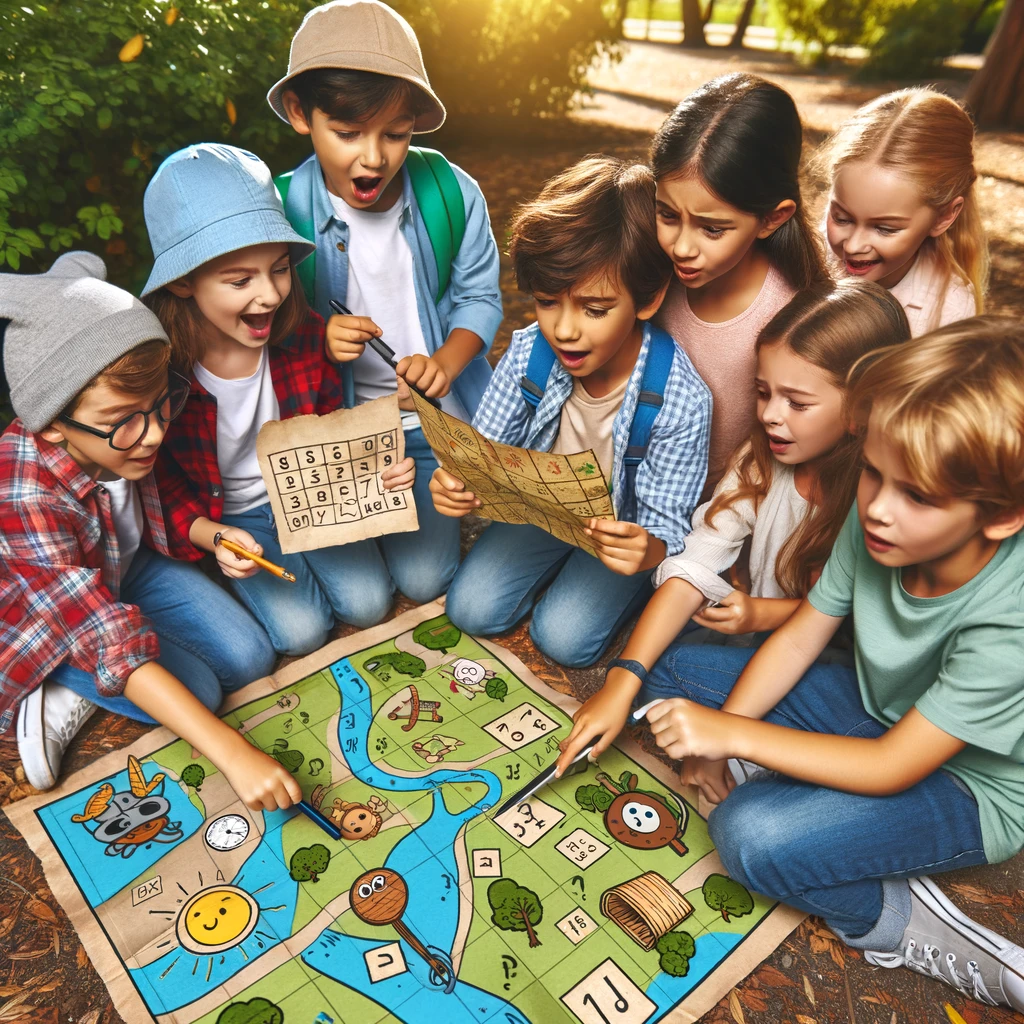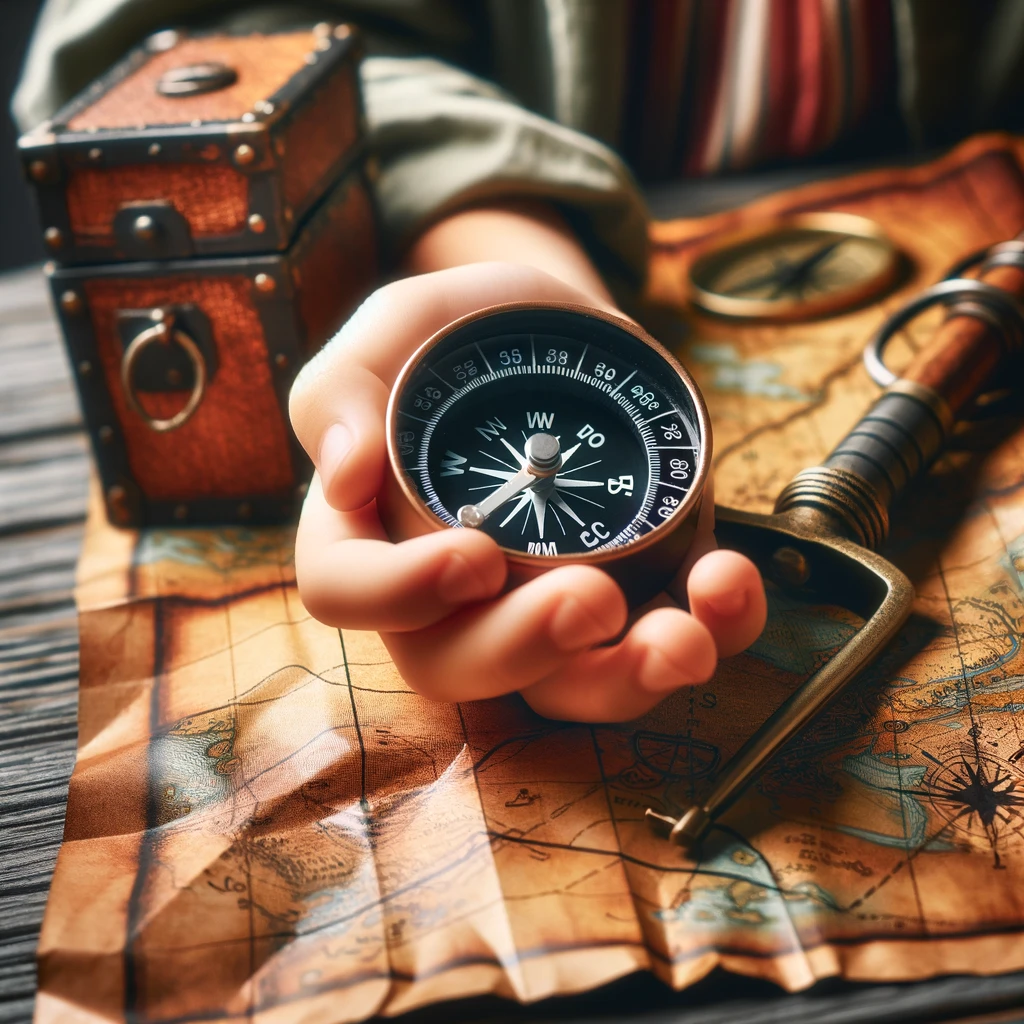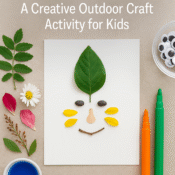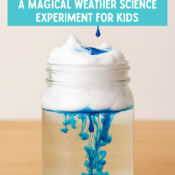
Treasure Hunt Math
Embarking on a treasure hunt adventure infused with math challenges offers an exhilarating way to enhance children’s arithmetic abilities and spatial navigation skills. This blog delves into the intricacies of organizing a “Treasure Hunt Math” game, a captivating activity designed to intertwine learning with fun, demonstrating how educational endeavors can be seamlessly integrated into exciting, real-world experiences.
Crafting the Adventure
The allure of a treasure hunt lies in its narrative. Begin by crafting a captivating story or theme—pirates searching for lost gold, explorers uncovering ancient artifacts, or detectives solving a mystery can serve as engaging backdrops. The narrative sets the stage for the treasure hunt, providing context and purpose that can captivate the participants’ imagination and enthusiasm.
Integrating Math into Clues
The heart of this treasure hunt is the math puzzles that serve as clues. Each clue should lead to the next location or step in the adventure, with the math problem’s complexity tailored to the children’s age and skill level. For younger children, simple addition, subtraction, or counting exercises can form the basis of the clues. Older participants might tackle more complex problems like multiplication, division, or basic geometry.

Examples of Math Clues
For younger children: “Find the number of steps that equal the sum of 3 + 4 to reach the next clue.”
For older children: “Locate a tree that stands alone, then walk the square root of 49 steps north to discover your next hint.”
Organizing the Hunt
Location: Choose a safe and manageable area for the hunt, such as a backyard, a park, or a school ground, where clues can be strategically placed without overwhelming the participants.
Materials: Prepare materials like maps, compasses, or even simple coordinate grids to introduce basic navigation skills alongside the math challenges.
Clues: Design clues that are challenging yet solvable, encouraging children to think critically and apply their math knowledge practically.

Enhancing Spatial Navigation Skills
Incorporating elements of spatial navigation into the treasure hunt not only makes it more thrilling but also educational. Use maps or compass directions in the clues, or create tasks that require understanding spatial concepts like distance, directions, and coordinates. This approach not only tests their math skills but also enhances their understanding of space and geography.
The Educational Impact
The “Treasure Hunt Math” game is a multi-faceted educational tool. It reinforces mathematical concepts in a practical setting, requiring children to apply what they’ve learned in class to solve real-world problems. Moreover, it boosts their spatial awareness and navigation skills, preparing them for more complex mathematical and geographical concepts in the future.
Making it a Memorable Experience
To ensure the treasure hunt remains a memorable experience, consider the following:
Include rewards at various stages, not just at the end, to maintain engagement and motivation.
Use themed decorations or costumes to enhance the narrative and immersive experience.
Encourage teamwork by organizing children into groups, fostering collaboration and communication skills.
A Treasure Trove of Learning
A “Treasure Hunt Math” game is more than just a fun day out; it’s a comprehensive educational activity that blends arithmetic learning with critical thinking and navigation skills. By participating in such an engaging adventure, children can develop a stronger grasp of mathematical concepts and an appreciation for the application of these skills in navigating the world around them.
In sum, this math-based treasure hunt is an innovative way to cultivate essential skills in children, making education an exciting and rewarding adventure. Through careful planning and creative thinking, parents and educators can transform an ordinary day into an extraordinary journey of discovery and learning.





[…] clues and create a treasure hunt for kids to solve. Hide small prizes or treats along the route for kids to find. Create clues that involve movement, […]
[…] or toddler! Whether at home or in the classroom, there are plenty of inspiring activities that will spark your child’s curiosity and creativity. Put on your thinking caps, and let’s explore some fun activities that will help kids get excited […]
[…] castles can be incorporated into educational adventures for kids, combining fun with learning. For example, themed inflatables, such as castles, pirate ships, or […]
[…] can transform your garden from a static space into a living, breathing work of art. So go on, More amazing activities for kids here. let your imagination take flight and watch as your outdoor area becomes a haven of movement […]
[…] and Literacy: via pattern challenges and tag […]